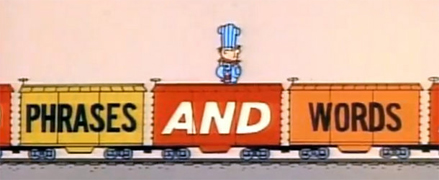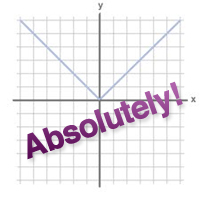![]() Today’s official SAT question of the day is an Improving Sentences question about a certain painter. The first part of the sentence gives some facts about the painter, so the second half of the sentence needs to start with something like “the painter” or his name. It doesn’t currently start this way, so let’s look for an option that does.
Today’s official SAT question of the day is an Improving Sentences question about a certain painter. The first part of the sentence gives some facts about the painter, so the second half of the sentence needs to start with something like “the painter” or his name. It doesn’t currently start this way, so let’s look for an option that does.
Author Archives: Elizabeth
ACT Question of the Day Explained – January 17, 2014 – English, Conjunctions
 Today’s ACT question of the day is an English question that, at its heart, is all about coordinating and subordinating conjunctions! (Whoa.) It’s not a real brain buster, don’t worry.
Today’s ACT question of the day is an English question that, at its heart, is all about coordinating and subordinating conjunctions! (Whoa.) It’s not a real brain buster, don’t worry.
In this question, a government agency was created to license radio stations, _____ it didn’t have any power over these stations. What word did you fill in there naturally? Remember that word. Continue reading
SAT Question of the Day Explained – January 17, 2014 – Sentence Completion
 Today’s official SAT question of the day is a sentence completion about a jellyfish. Per the sentence, the jellyfish swims in a certain kind of drift, but its tentacles contain poison. So, what kind of drift do we have here? Continue reading
Today’s official SAT question of the day is a sentence completion about a jellyfish. Per the sentence, the jellyfish swims in a certain kind of drift, but its tentacles contain poison. So, what kind of drift do we have here? Continue reading
ACT Question of the Day Explained – January 16, 2014 – Science
 Today’s ACT question of the day is a science question about a bottom-dwelling organism. (Now you have a new name to call your best friend when s/he makes you mad! Not responsible if you try that on your parents.)
Today’s ACT question of the day is a science question about a bottom-dwelling organism. (Now you have a new name to call your best friend when s/he makes you mad! Not responsible if you try that on your parents.)
We have a table that describes the concentrations of certain ions in the sediment at the bottom of an ocean. Does it matter, for the ACT, if you know what all of those symbols (Fe, O, CO, etc.) stand for? Do you need to know what pH is? Nope. Just make sure you look at the right symbols when it comes time to answer the question.
Speaking of the question, our bottom-dwelling organism is a little picky and it wants a sediment depth that provides the following conditions:
- a neutral pH (which, according to the given text, is 7)
- low Fe2+
- high concentrations of O2
Time to read the chart! Continue reading
SAT Question of the Day Explained – January 16, 2014 – Math, Algebra, Absolute Value
 Today’s SAT question of the day begins with two numbers, a, and b. The difference between |a| and |b| is 5. The answer choices provide four false statements and one potentially true statement.
Today’s SAT question of the day begins with two numbers, a, and b. The difference between |a| and |b| is 5. The answer choices provide four false statements and one potentially true statement.
To look at things a different way, a – b is 5 and neither a nor b can be negative. This means that a has to be bigger than b, and that a has to be at least 5. (Test it out: for example, if a was 2, could we subtract any positive number and get 5? Nope.) Continue reading
ACT Question of the Day Explained – January 15, 2014 – Reading
SAT Question of the Day Explained – January 15, 2014 – Identifying Sentence Errors
Today’s official SAT question of the day is from the Writing section, question type #2: Identifying Sentence Errors. For this type of question, you only have to find the problem, not fix it. We can find the problem by reading carefully (yes, that is a different kind of reading than regular reading), making sure to read every single word and not overlook small differences since errors in these questions often come down to single letters. Continue reading
ACT Question of the Day Explained – January 14, 2014 – Geometry, Isosceles Triangles
 Today’s ACT question of the day involves a triangle with two equal sides. Triangles with two equal sides (and, therefore, two equal angles) are isosceles triangles. This is a key observation to make before taking on this problem.
Today’s ACT question of the day involves a triangle with two equal sides. Triangles with two equal sides (and, therefore, two equal angles) are isosceles triangles. This is a key observation to make before taking on this problem.
We have an isosceles triangle with only a base (length of 10). The height has been drawn in, bisecting the third angle and meeting the base at a right angle, but we don’t know its length. It would be nice if we did, right? Area of a triangle = 1/2 • base • height.
If we knew any of the angle measures, maybe we could luck out and find a 45-45-90 or 30-60-90 triangle somewhere in the diagram. We could also be sharp and recall one of our Pythagorean triplets: 3, 4, 5. Unfortunately, we don’t have any facts to support those guesses. We do have answer choices that work if you make those spurious assumptions, so be careful! Don’t make things up just to make the problem seem easier.
We could try to use trigonometry creatively to derive the hypotenuse, then work backward to find the height. Unfortunately, cos90 = 0, so that ends right there. If we knew the angle at the top of the triangle, we could use the sin of that angle • half the square of the length of one of the equal sides to find the area (works for all isosceles triangles)…but we have neither measure. What now?
SAT Question of the Day Explained – January 14, 2014 – Sentence Completion
Today’s official SAT question of the day is a sentence completion with two blanks. Remember that for two-blank sentences your answer choice has to work for both blanks!
So, let’s figure out what words would make sense in these blanks. Continue reading
ACT Question of the Day Explained – January 13, 2014 – English
 Today’s ACT question of the day presents a key piece of information that is out of order in its sentence.
Today’s ACT question of the day presents a key piece of information that is out of order in its sentence.
The paragraph in which it appears is about a professor who is preoccupied by baseball. The underlined statement is not intended to refer to the professor, though that is the confusing situation with which we are presented. So, what do we do?

